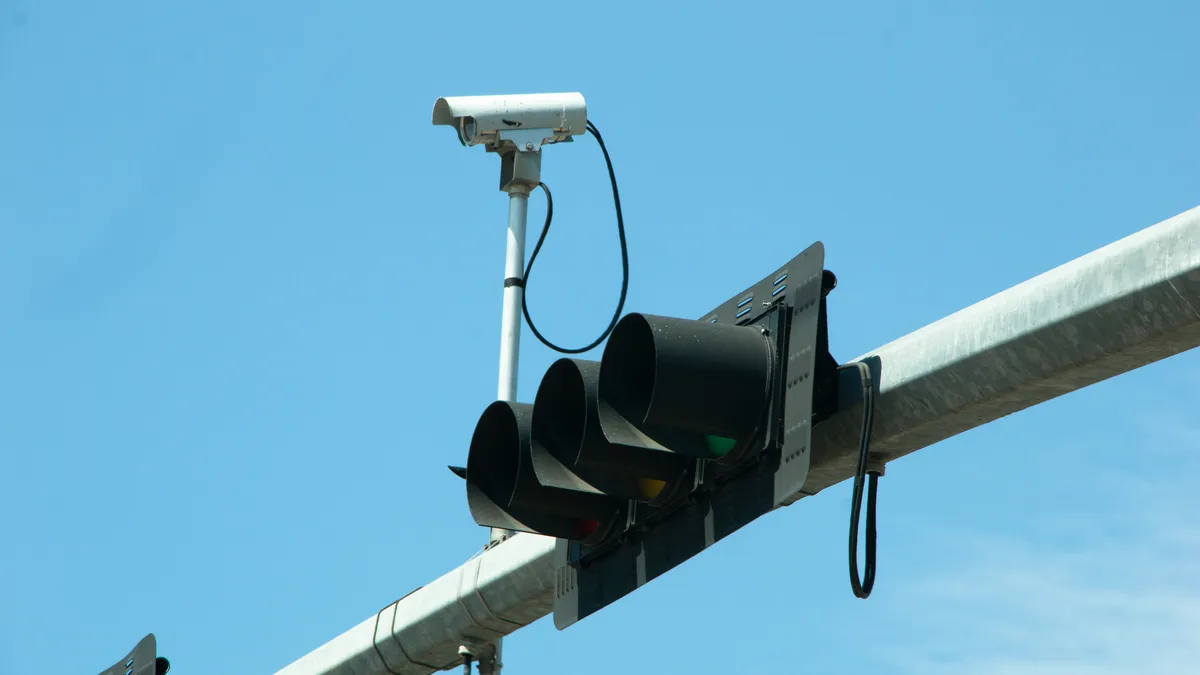Dive Brief:
- Intelligent transportation systems — technologies such as those that give emergency vehicles priority at traffic lights and adapt signals to improve the flow of traffic — can reduce crashes and improve emergency response times, according to a September report from the Government Accountability Office.
- While some of these technologies have been in use since the 1960s, state and local officials complained in the report of operational problems and said the ability to reap benefits from their investments “depends on sustained funding and leadership.”
- Cities primarily choose where and how to use ITS technologies based on their local priorities, which can range from lessening traffic on existing roads to dealing with weather-related incidents, the GAO report says.
Dive Insight:
Many motorists are familiar with electronic message signs and closed-circuit video cameras that monitor traffic conditions, but the broader promise of intelligent transportation systems is that they could reduce traffic fatalities, congestion and vehicle emissions while providing greater equity in the U.S. transportation system, according to ITS America, an advocacy organization.
The GAO report cited a study that found a 5% reduction in crashes from 2011 to 2018 along five road corridors where adaptive traffic signal control was in use. Using sensors, these technologies can change the timing of traffic signals to reduce unnecessary wait times at red lights and help move vehicles through green lights. Another study in Virginia showed that drivers responded to variable speed limit systems that lower speeds in poor weather conditions.
Some communities have used ITS to improve safety for pedestrians and bicyclists. One small city told the GAO that “ITS had enabled them to repurpose roadway space for bicyclists and pedestrians without negatively affecting vehicle traffic.” A different small city used ITS “to create a more walkable and bicycle-friendly downtown area.” In another example, a county installed flashing pedestrian beacons that “had high compliance rates in terms of vehicle drivers stopping, which improved pedestrian safety.”
However, the report details negative experiences as well. In Washington, D.C., some traffic signal systems that give priority to transit vehicles weren’t effective in keeping buses on schedule due to high traffic volumes and the time needed for pedestrians to cross the streets in those areas. The District Department of Transportation redeployed 40 of the non-effective signals to intersections in “more disadvantaged parts of the city, which allowed them to further equity goals as well as congestion-related goals,” the GAO report states.
Some transportation officials noted in the report that because ITS technology rapidly evolves, equipment can quickly become outdated. Others described problems getting ITS technologies to integrate properly with their existing hardware and software systems as well as frequent maintenance issues. Cybersecurity was also a concern, with agencies reporting breaches and other events that affected their information technology systems and transportation operations.
The GAO report concludes that “ITS can provide benefits related to traffic congestion and safety, but various factors and challenges can limit the extent of these benefits.”












